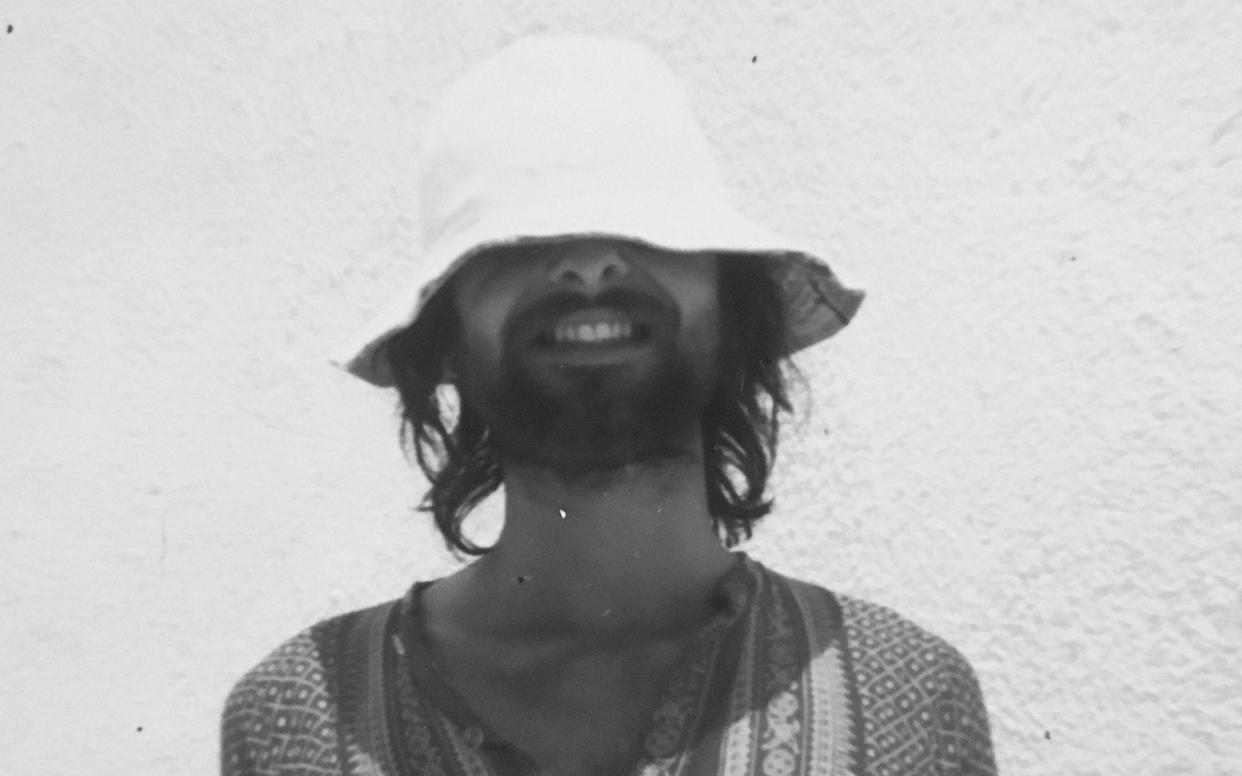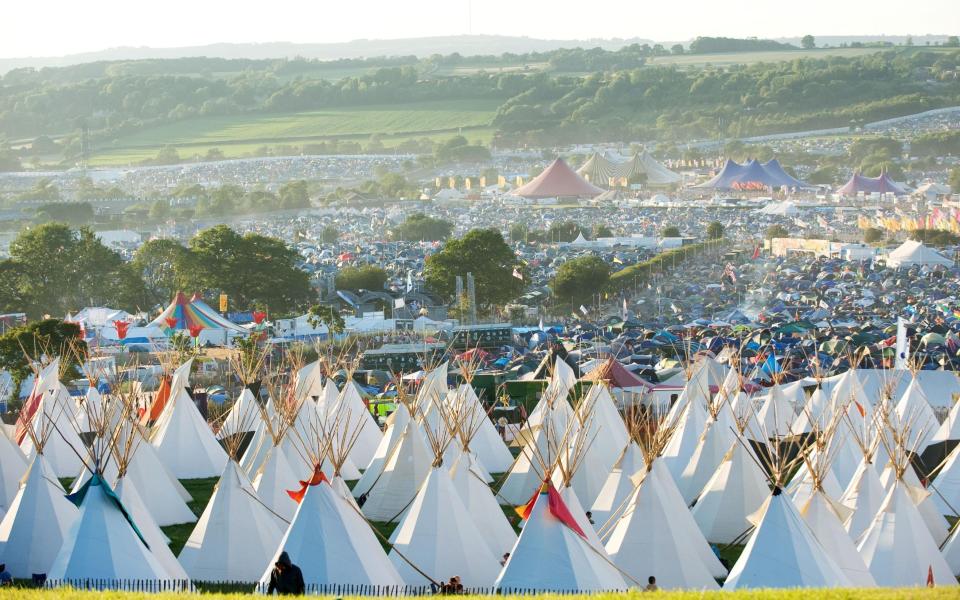Glastonbury’s first DJ: ‘I had serious doubts Michael Eavis could even pull it off’

They always say hindsight is a wonderful thing. It’s true, because if I’d known, I would have tried to remember more about September 19, 1970. Perhaps taken some photographs, made a few notes. After all, it’s not every day you become the first DJ to play Glastonbury, the world’s greatest music festival. 50 years on, I’m still kicking myself.
At the time, I was a professional DJ who went by the rather dubious name “Mad Mick”. Based in Bath, I played all over the country, mainly at clubs or discos, but that summer my agent asked if I’d be available to compere and DJ at an outdoor gig on a sleepy dairy farm in the nearby village of Pilton in Somerset. The farmer, Michael Eavis, who I knew from the blues scene in Bath, would be booking groups to perform all day. It was branded as a “day festival”, but, really, it sounded like a hippy garden fete.
Still, I was happy to play. Ahead of the gig, my agent and I drove to Worthy Farm and, over tea and homemade cake in the farmhouse kitchen, listened to Michael and his wife, Jean, tell us of their grand vision for an eclectic, fairly star-studded day of music. They had been inspired by the Bath Festival of Blues, where Led Zeppelin had played, and planned to host a “Pilton Pop Folk & Blues Festival”. I remember having serious doubts they could pull it off, but they were warm and genuine people, so I wished them the best of luck and forgot about it for a few weeks.

When the day came, it felt like just another gig. My wife, Rose (incidentally, it is also our 50th anniversary this summer), and I set off that morning with a boot full of vinyl, some wine and sandwiches, determined to enjoy it, however it went. Unlike these days, there were no traffic jams in the lanes around Worthy Farm, just a few trucks in a field, parked behind a crude, makeshift stage with a tarpaulin cover.
The record decks and sound system were being set up, and a smallish crowd of bohemian types and locals had started to gather. Eavis charged the 1,500-odd revellers £1 for entry, offered fresh milk, ox roast, and “sheltered fields for camping”.
Bands started arriving. It was all very laid back, but a running order of sorts was hashed together from those who’d turned up. The Kinks had been advertised as headlining, but they pulled out at the last minute (I bet they’re kicking themselves, too), to be replaced at the top of the bill by a semi-acoustic Marc Bolan and his band, Tyrannosaurus Rex. The next month, he’d shorten that name, release ‘Ride a White Swan’, and effectively invent glam rock
It all kicked off around midday. Records show that English psychedelic rockers Quintessence went on first, followed by blues singer Duster Bennett, then Steamhammer, Sam Apple Pie, Stackridge, Al Stewart, Keith Christmas and The Alan Brown Set – a brilliant soul band whose singer had recently left, to be replaced by a new, young vocalist, a certain Robert Palmer.

I was due to be one of two comperes playing records between bands, but the other one didn’t bother showing up, so I did the whole day. I still remember the very first record I played was the original version of ‘It’s All Over Now’ by the Valentinos, with Bobby Womack on lead vocals (The Rolling Stones would later make the song much more famous). It went down a storm. So much so, in fact, that Marc Bolan – always fearless and exuberant – came over and asked to have it. I said no, and still have it today.
I had a marvellous time playing everything from ska to psychedelic folk, and remember arranging a chaotic limbo contest on stage with half a dozen spaced-out hippies just to add a little fun to proceedings. Everybody was soon a little worse for wear, but there was no trouble. In fact, the only security I recall was a brief appearance from a pair of rather bored policemen from Shepton Mallet.
The whole thing ended at around midnight, we were home half an hour later, and I just wondered if I’d get paid. I did, in the end – about £20. But I went into the day considering it just another gig, and that’s what it was. Michael had proven me wrong and pulled his vision off, but if you’d told me, as I drove home that night, that his festival would not just return almost annually (aside from the odd fallow year) for the next half a century, but turn into one of the cultural highlights of the global calendar, the pinnacle of Britain’s music scene, and the stage all pop musicians around the world would aspire to headline, I’d have laughed.

It’s incredible how it’s grown. I never went back – I carried on DJing in nightclubs and discos for a few years, then chucked it all in, had kids and opened a toy shop in Bath – but watched as Glastonbury grew and grew, adding more stages, opening new areas, overcoming its raucous years and a not-inconsiderable amount of mud, to become the extraordinary thing it is.
Crucially, and perhaps this is due to Michael keeping the running of the festival in the family (his daughter, Emily, is in charge these days), it hasn’t lost the spirit it was originally intended to celebrate. That time, fifty years ago, was the crossroads between flower power and an exciting future. Jimi Hendrix had just died, the Beatles had split, but there was an anticipation about the vivid new decade.
I think it’s that feeling that draws people back. You often hear people talk about escaping the drudgery of everyday life at Glastonbury, that for four or five days in June they can go to this citadel of fun and love and just be themselves, be equals, work together, exchange ideas, dream of a better world, dance and be free. If that’s not the spirit of 1970, I don’t know what is.

Over the years, as people have asked, with wide-eyed wonder, just what it was like to be there for a moment in history, I’ve come to realise I was part of something special. I’m 73 now, and our children, Jesse James and Gypsy Rose, think it’s pretty cool I played. They can tell their children one day too.
In 2010, when Stevie Wonder headlined, Michael invited me back to DJ at the 40th anniversary festival. I played in the ‘Park’ area, and marvelled at how gargantuan the place was. But it was magical, and the crowd – everyone from old rockers my age to young kids and all ages in between – responded with such affection. I played the same set, opened by that same Valentinos track, as in 1970. And you know what? It went down a storm. I’ve still got it.
For entirely understandable reasons, this year’s 50th anniversary celebration has been cancelled. It’s a shame for everybody involved, of course, but another year to build excitement can’t hurt, and after all we’ve been through, you wouldn’t bet against next year’s party being the best ever. Maybe I’ll be asked to dust off the old vinyl again. I haven’t received the call just yet, but if they need a DJ and compere, I’ll leave June 2021 free in the diary. And this time, I’ll definitely remember it.
As told to Guy Kelly


